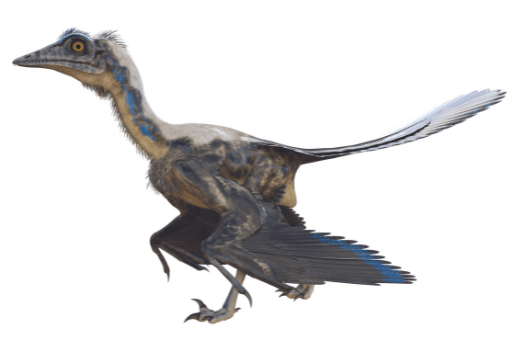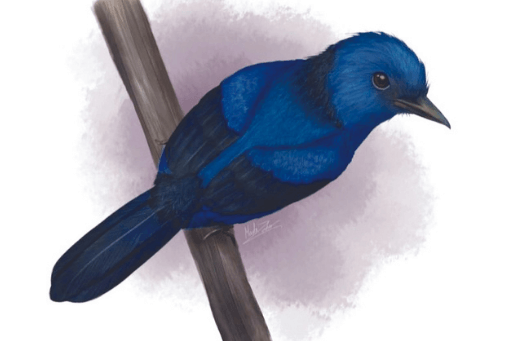How Old Are Birds? Exploring the Bird-Dinosaur Nexus
For more than 100 years starting in the 1860s, the famous Archaeopteryx lithographica was thought to be the earliest bird, or at least bird-like dinosaur. That's because Archaeopteryx fossils showed something never seen before: feathers. This crow-sized creature with both bird and dinosaur traits lived during the Jurassic Period about 150 million years ago (MYA). That was a long time back, but the origin of birds was probably millions of years before then.
It can be hard to decide, however, what was a bird and what wasn't. That's because many dinosaur lineages exhibited such bird-like characteristics as walking on two legs or having a kind of beak, although with teeth, but many of these creatures probably weren't really birds.

There is now scientific consensus that birds are “living dinosaurs” that evolved from a branch of dinosaur ancestors, but there is no distinct break that we can point to and say, “Now, these are birds, and these aren't.” Instead, we see a gradual accumulation of bird-like characteristics, including feathers, over time. (And, as just mentioned, there were also lineages with bird-like characteristics that never became birds.)
Millions of years before Archaeopteryx, dinosaurs like the squat, turkey-sized herbivore called Kulindadromeus zabaikalicus began to show some evidence of something that would eventually become feathers. Kulindadromeus and its relatives, and maybe even many other kinds of dinosaurs, had a type of proto-feathers: a covering of thread- or hair-like filaments that resemble some kinds of bird down. Such fine filaments were very different from the plumes seen on Archaeopteryx, and likely served as insulation rather than aiding in flight.

Feathers do seem to make the bird, though: In modern times, we don't know of any animals that have feathers that aren't birds. This is what made Archaeopteryx such a key discovery for 19th-century paleontologists. Feathers, of course, usually do not preserve well as fossils; hard structures like bones are much better preserved. Feathers are only preserved as fossils when they are covered very quickly and gently by fine sediments that harden to stone without being further disturbed, saving their imprint. However, in the last 30 years, paleontologists have been investigating rock formations, especially in Asia and South America but also North America, that do preserve these kinds of impressions. There have been many recent discoveries that tell us more about the early birds and what they were like.
Many of these recently found fossils show evidence of feathers, from early fluff-like feathers that resemble those found on modern, flightless kiwis to fully developed ones, as we think of a modern bird's flight feathers. Some of these fossils have greatly increased our knowledge of what birds looked like, even down to their color patterns.
Colors, of course, are even less likely to fossilize than the feathers themselves, but modern analysis and imaging techniques have begun to provide us with ideas of what fossil birds did look like. One example is melanin, a pigment that gives black, gray, and reddish-brown colors that are often a key part of feather patterns. In feathers, melanin is often clumped in microscopic granules called melanosomes, and the nature of the melanin molecule makes it resistant to decay. In fossils, although the melanin itself is long gone, the melanosomes persisted long enough to leave tiny, microscopic impressions in fossilizing rock.

In some cases, modern microscopy, using such high-tech tools as high-energy X-rays from synchrotron radiation, has been able to detect what appear to be the shadows of melanosomes, and the arrangements of these suggest what the overall pattern of the feather may have looked like. For example, in living birds — say, a Red-shouldered Hawk — we can see a tail pattern of light and dark bands that is formed by patterns of melanosomes. Some of these types of bands have been detected in fossils like Anchiornis huxleyi, a striking bird-like dinosaur from about the same era as Archaeopteryx (150 MYA). Anchiornis had black-and-white patterns on its wings, tail, and leg-ruff feathers, and possibly sported a reddish-brown crown. Confuciusornis sanctus, from about 130 MYA, was another bird-like dinosaur with a dark body and light-colored wings. Reconstruction of these dinosaur-birds' patterns suggest that they looked like something we might recognize as a bird pattern today, even if it's not on a “bird” we know.
Yellow and red pigments don't fossilize well because these pigments are much more fragile than melanin and the relatively resistant melanosomes. Therefore, we don't know much about yellow, red, or green coloration in early birds. But we can tell that some were iridescent, like hummingbirds or starlings are today. This is because iridescence is created from feather structure and the presence of melanin.
Iridescent feathers seem to contain melanosomes that are of various shapes, including flattened and hollow, different from the shapes seen in flat black, gray, or brown. By looking at the shapes of the melanosomes, paleontologists can now see that some fossilized birds, such as Primotrogon, which lived about 50 MYA and was an early relative of our modern trogons, had iridescent plumage.

The color blue in birds is also a structural color, relying on layers and spaces within the feather to reflect back blue light, as a prism can break light into its colors. The structure of these layers is also produced by melanosomes, but melanosomes of a very specific size and shape. As with the overall pattern of light and dark, these patterns of melanosomes can also be detected.
Because this is a structure in the feather, powerful new microscopy techniques have been able to detect these arrangements of melanosomes in fossils. An example is the blue in Eocoracias brachyptera, a bird related to kingfishers that lived 47 MYA.
The analysis of these tiny structures in well-preserved fossils shows that birds from tens of millions of years ago may not have looked that different from the birds we see today, with patterns of light and dark, blue, and sometimes iridescence. Wouldn't it be great if there were only a way to get them on our life lists!
Birds are great survivors; they've been around for at least 150 million years. But today they face their sharpest, most focused threat ever. In a blink of geologic time, many are in steady decline, while others are vanishing forever.
Unlike past extinction waves, human activities are the main cause of this downturn and, thus, we need to play a key role in keeping the world's diverse birdlife flying free. So that others will know what “our” birds look like, and for so many other reasons, let's save the birds and their dinosaur legacy!
 David Wiedenfeld is ABC's Senior Conservation Scientist. He received his Ph.D. from Florida State University. His work has focused on bird population ecology and conservation biology. David served for five years as Director of Research at the Sutton Avian Research Center, working primarily on prairie-chickens. He was also Head of the Department of Vertebrate Ecology at the Charles Darwin Research Station in the Galapagos Islands.
David Wiedenfeld is ABC's Senior Conservation Scientist. He received his Ph.D. from Florida State University. His work has focused on bird population ecology and conservation biology. David served for five years as Director of Research at the Sutton Avian Research Center, working primarily on prairie-chickens. He was also Head of the Department of Vertebrate Ecology at the Charles Darwin Research Station in the Galapagos Islands.


















































